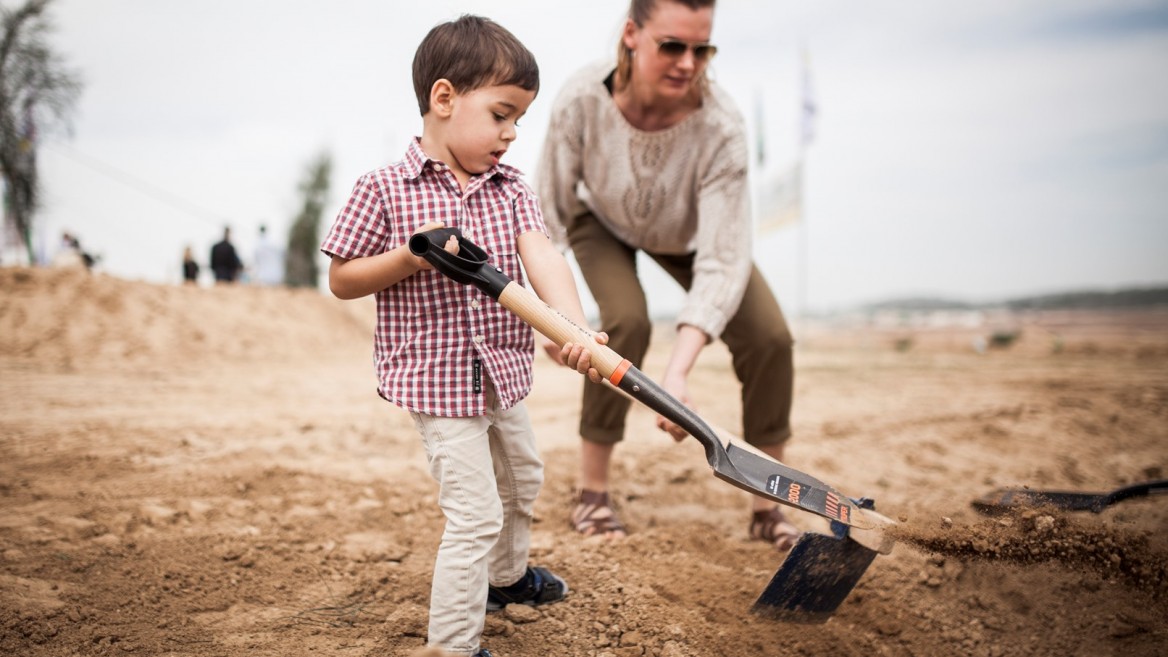The OR Movement’s Carmit community, founded in 2010 in the northern Negev, is 15 minutes from Beersheva and an hour from Tel Aviv and Jerusalem. Photo: courtesy
Israel’s Future: The OR Movement
Grassroots Israeli groups are ready to share their ambitious plans to provide attractive, affordable living in the underpopulated South and North.
The Israeli Ministry for the Development of the Negev and Galilee did not yet exist in 1998 when four childhood friends from Petah Tikva finished the army and decided to dedicate themselves to building up those southern and northern periphery areas of Israel.
With the enthusiastic support of the Ministry of Infrastructure, the friends broke ground in April 1999 for Sansana, the first new community in the Negev in more than 20 years. They moved in, studied the challenges of local life, and identified officials and philanthropists who could help them overcome those challenges.
“In 2002 we established our organization, the OR Movement, as a platform to do much more,” says Ofir Fisher, now 40.
Or means “light” in Hebrew. The nonprofit sees its mission as lighting up the darkness – the underdevelopment — of the Negev and Galilee. Although these regions comprise three-quarters of Israel’s land mass, only one-quarter of approximately 8 million Israelis choose to live in them. The Negev, four times larger than the Galilee, is especially sparse in terms of habitation.
Since founding nine new communities (mainly in the Negev) and revitalizing 64 stagnant communities (mainly in the Galilee), the OR Movement has inspired 32,000 Israelis to relocate.

OR-Eliav. Eliav, an OR Movement community under construction southeast of Kiryat Gat, has a core group of 39 secular and Orthodox families. The final stage of the project will house 220 families. Photo courtesy
By the time of the state’s centennial in 2048, the OR Movement aims to have 40 percent of an estimated 16 million Israelis (double today’s population) residing in the two regions.
As people move in, the job picture improves. Between 2008 and 2010, 130 new enterprises opened in the Negev, including branches of multinational companies. Tourism and employment have further burgeoned as Beersheva, the unofficial capital of the Negev, is transforming into a cyber hub. In the Galilee, improved public transport and a growing number of high-tech parks and international R&D centers are attracting more residents.

Noah Initiative’s team, from left – Elinor Zagori, Noa Ben Aharon, Omer Schloss, Ben Topor, Noa Tasman, Gali Froind and Eyal Taubman. Photo courtesy
About 20 volunteers are involved in planning the future Noah neighborhood, to encompass 4,000 young adults in 1,100 privately funded housing units built to green standards with smart-city technologies.
The Housing Ministry approved the plan in March, and Topor expects construction to begin next year. The Ness Fund is providing funding and consultation.
For more information on the OR Movement, click here.
For more information on Ayalim, click here.
For more information on the Noah Initiative, click here.
Go to Israel21c for the rest of the story










